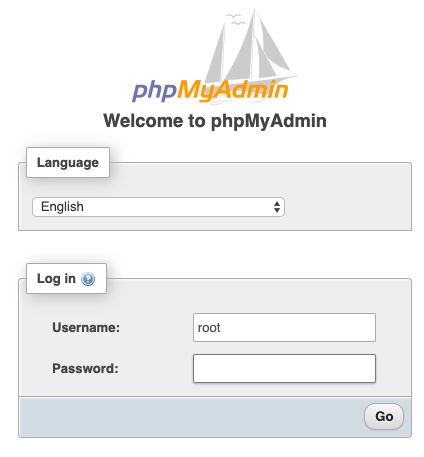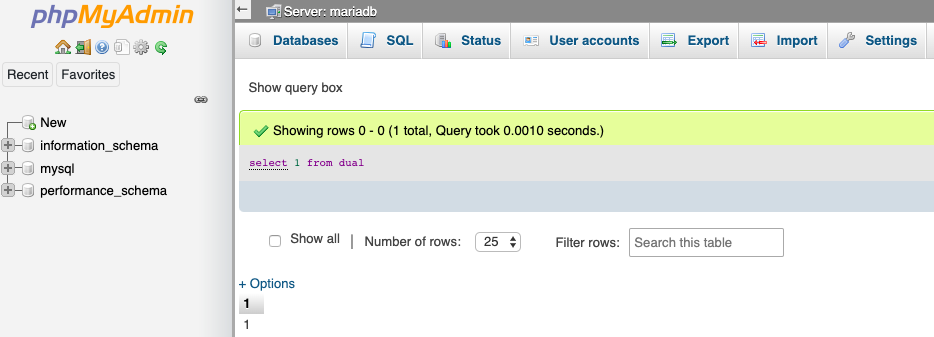Deploying your docker image to kubernetes in 5 mins
This blog entry is part of the series of blogs to productionise a docker image in kubernetes for enterprises. Considering you have already understood the benefits of containerization, docker, kubernetes and want to take the brave step of migrating your existing docker images to kubernetes, this blog will give you quick steps using minikube version of kubernetes.
Minikube is a tool that runs a single-node Kubernetes cluster in a virtual machine on your personal computer. Deploying it in Minikube normally means you will be able to deploy your Docker images in most other versions of Kubernetes without many modifications.
For the sake of simplicity, we shall pick a couple of docker images from open libraries.
- Mariadb is a community-developed fork of MySQL DB intended to remain free under the GNU GPL
- PhpMyAdmin A web interface for MySQL and MariaDB administration.
This is a quick way of a simulating an application stack with a 2-tier based web architecture and orchestration of multiple docker containers.
Deploying using commands
Start a quick single-node cluster
minikube start
Login to Docker
docker login
A Kubernetes Pod is a group of one or more Containers, tied together for the purposes of administration and networking.
A Kubernetes Deployment checks on the health of your Pod and restarts the Pod’s Container if it terminates. Deployments are the recommended way to manage the creation and scaling of Pods.
For the benefit of our exercise, we will stick to the model of one container per pod.
Deploy Mariadb
Create deployment
kubectl create deployment mariadb --image=docker.io/mariadb:latest
Get pod name for mariadb from the list of running pods
kubectl get pods NAME READY STATUS RESTARTS AGE mariadb-7bb67dd9fc-8kjpm 1/1 Running 0 14h
Check logs for mariadb pod, this will indicate that pods are failing to run because of the absence of required property MYSQL_ROOT_PASSWORD
kubectl logs mariadb-7bb67dd9fc-8kjpm
Create a secret for storing the password for MariaDB root user. Kubernetes Secrets let you store and manage sensitive information, such as passwords, OAuth tokens, and ssh keys. Storing confidential information in a Secret is safer and more flexible than putting it verbatim in a Pod definition or in a container image.
kubectl create secret generic mariadb-secret --from-literal=MYSQL_ROOT_PASSWORD=changeit
Pass this as an environment property to the deployment
kubectl set env --from=secret/mariadb-secret deployment/mariadb
Restart the pod, so the docker image can pick up the root password during initialisation. There are 3 ways to restart a pod and my preferred way is as below.
kubectl rollout restart deployment/mariadb
To make the mariadb Container accessible from outside the Kubernetes virtual network, you have to expose the Pod as a Kubernetes Service. Create mariadb service of type “ClusterIP” on top of deployment so its only accessible within the cluster in port 3306.
kubectl expose deployment mariadb --port=3306 --type=ClusterIP
Check the list of services running to see if mariadb is exposed on this port
kubectl get svc NAME TYPE CLUSTER-IP EXTERNAL-IP PORT(S) AGE mariadb ClusterIP 10.99.151.240 3306/TCP 13h
Deploy PhpMyAdmin
Create deployment
kubectl create deployment phpmyadmin --image=docker.io/phpmyadmin/phpmyadmin:latest
Get pod name for phpmyadmin from the list of running pods
kubectl get pods NAME READY STATUS RESTARTS AGE mariadb-7bb67dd9fc-8kjpm 1/1 Running 0 14h phpmyadmin-7559f85f5b-ppjwk 1/1 Running 0 13h
Check logs for phpmyadmin pod, this will indicate that pods are failing to run because of the absence of required properties MYSQL_ROOT_PASSWORD
kubectl logs phpmyadmin-7559f85f5b-ppjwk
Pass the root user password and database hostname as environment properties to the deployment
kubectl set env --from=secret/mariadb-secret deployment/phpmyadmin
A ConfigMap is an API object used to store non-confidential data in key-value pairs. Pods can consume ConfigMaps as environment variables, command-line arguments, or as configuration files in a volume. A ConfigMap allows you to decouple environment-specific configuration from your container images, so that your applications are easily portable. We will store the database host name property in a config map.
kubectl create configmap phpmyadmin-config --from-literal=PMA_HOST=mariadb
Set env variable on PHPMyAdmin deployment from configmap
kubectl set env --keys=PMA_HOST --from=configmap/phpmyadmin-config deployment/phpmyadmin
Restart the pod, so the docker image can pick up the required properties during initialisation. One of the easiest way to restart is scale down to 0 and scale up the pod.
kubectl scale --replicas=0 deployments/phpmyadmin kubectl scale --replicas=1 deployments/phpmyadmin
Expose phpmyadmin as a service for the pod port 80 to be accessible from external world in port 80, keep the service type To “LoadBalancer”.
kubectl expose deployment phpmyadmin --port=80 --target-port=80 --type=LoadBalancer
Check the list of services running to see if phpmyadmin and mariadb are exposed as services
kubectl get svc NAME TYPE CLUSTER-IP EXTERNAL-IP PORT(S) AGE kubernetes ClusterIP 10.96.0.1 443/TCP 34d mariadb ClusterIP 10.99.151.240 3306/TCP 14h phpmyadmin LoadBalancer 10.105.202.36 80:31779/TCP 13h
View the phpmyadmin service in browser using the below command
minikube service phpmyadmin

Login using ‘root’ as Username and ‘changeit’ as password. Click on the SQL tab and execute a sample query “select 1 from dual”, hit “Go” button to see results(as below). Also, this will prove end to end connectivity.

Delete the resources
kubectl delete deployment phpmyadmin kubectl delete deployment mariadb kubectl delete svc mariadb kubectl delete svc phpmyadmin kubectl delete secret mariadb-secret kubectl delete configmap phpmyadmin-config
This is a quick way of getting your docker images deployed into Kubernetes. Normally imperative command creation of Kubernetes resources is not the preferred approach beyond development environment and we will see deploying your docker images in a declarative way in this article. A detailed explanation of different ways of creating Kubernetes resources and their pros/cons is available here.
